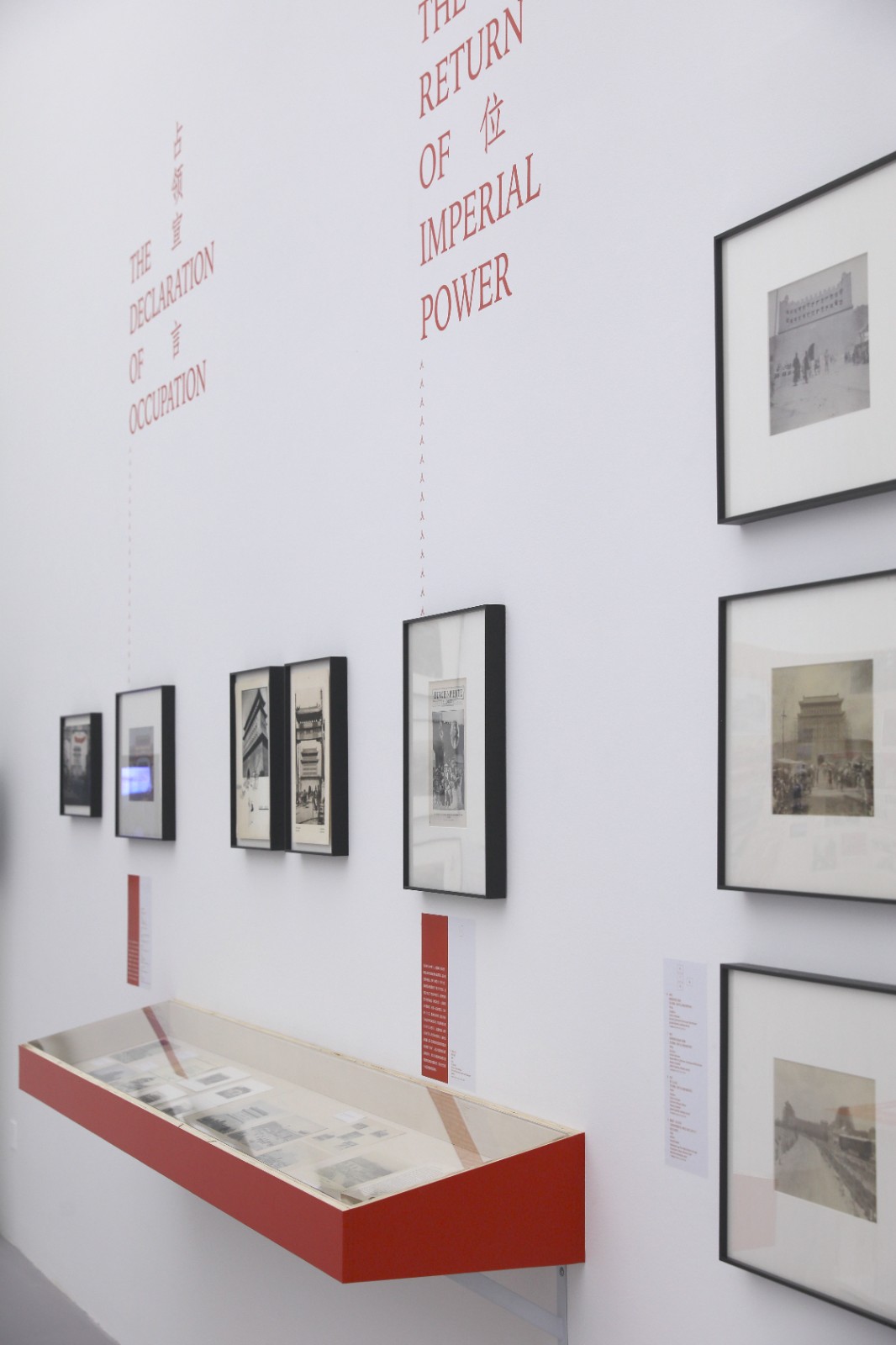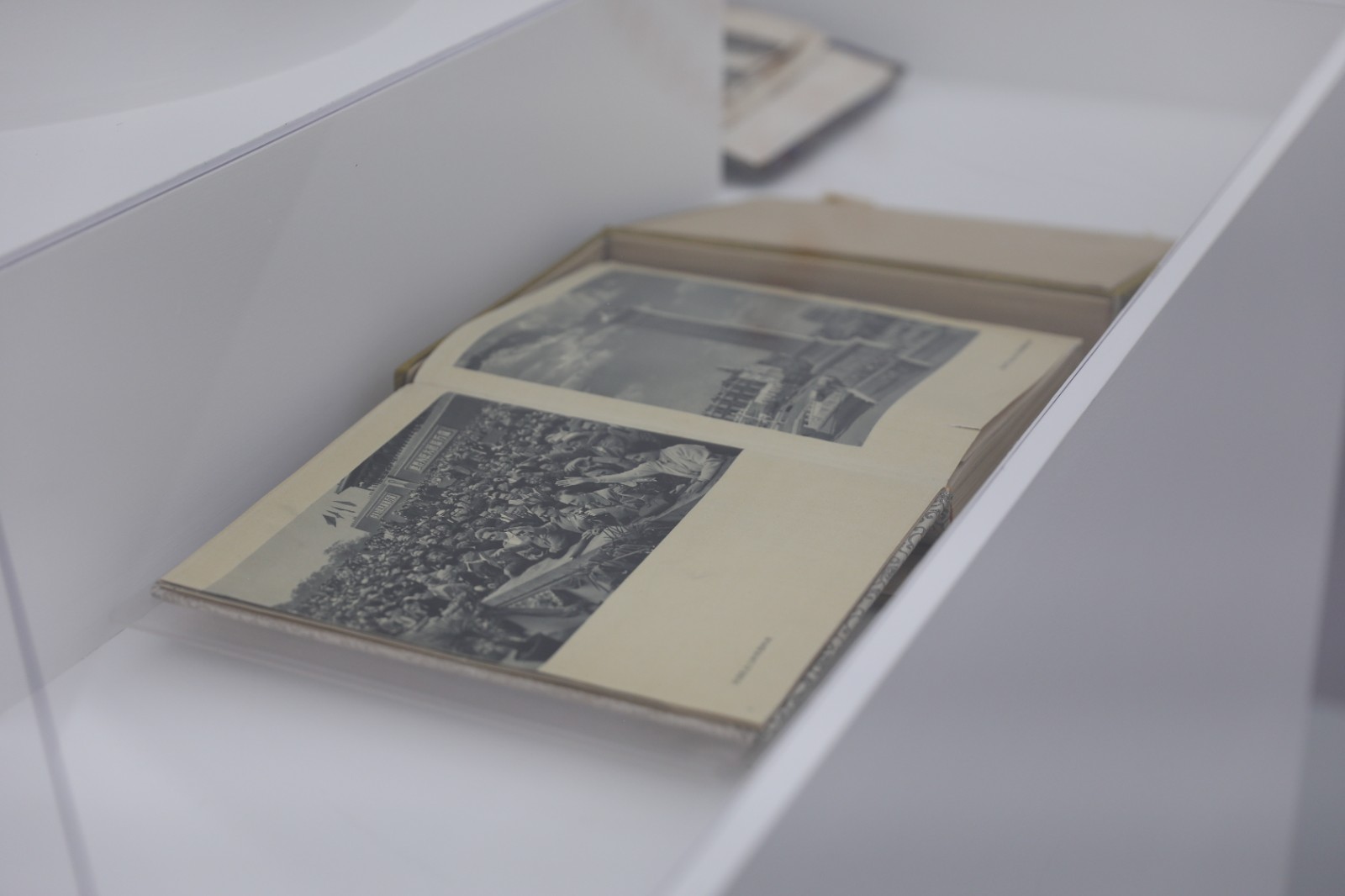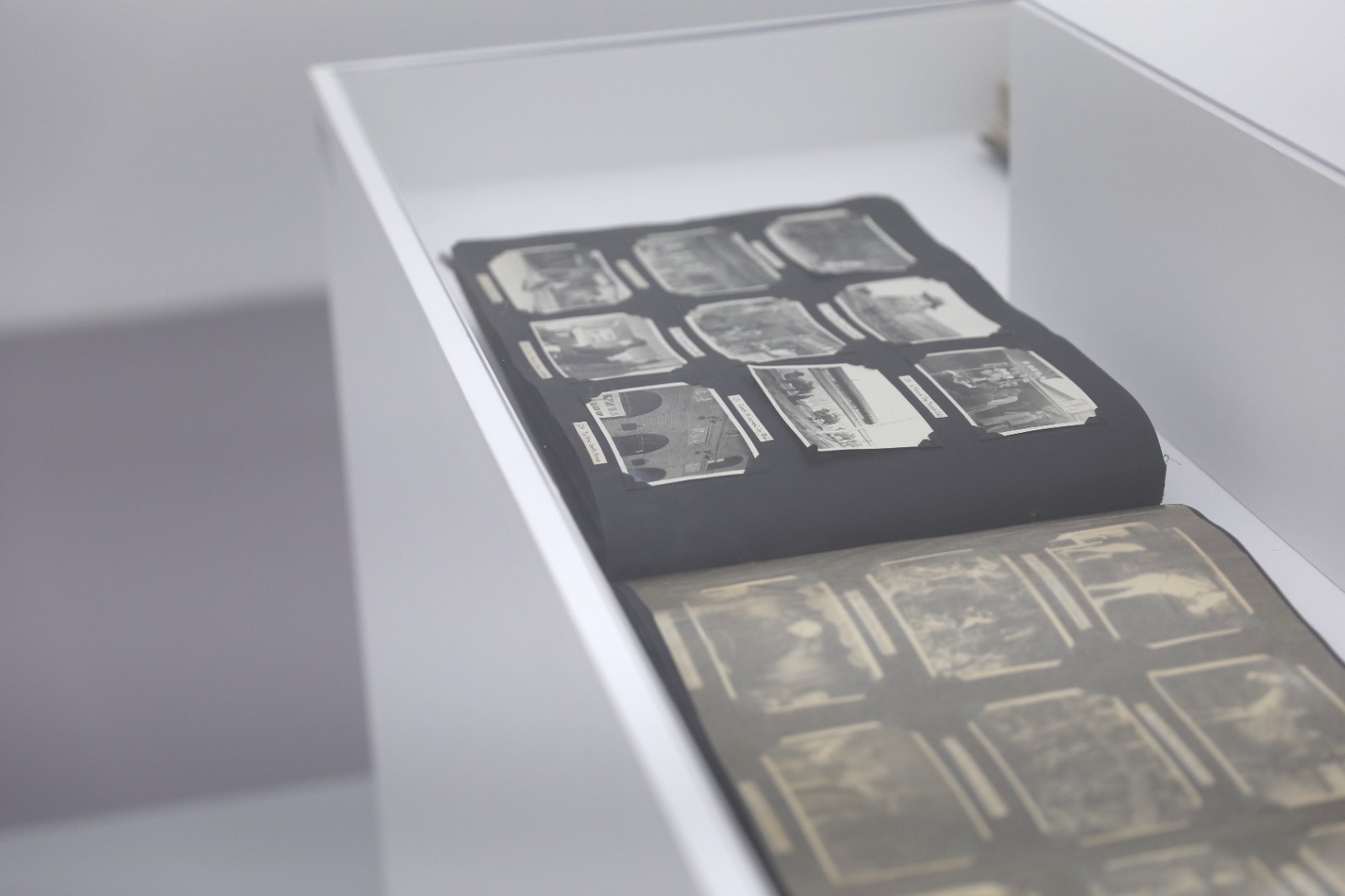 Taikang Space’s latest exhibition “City Gate, Pailou and Square: An Archaeology of Action on Photographs and Histories” opened to the public on September 1.
Taikang Space’s latest exhibition “City Gate, Pailou and Square: An Archaeology of Action on Photographs and Histories” opened to the public on September 1.
The exhibition includes photos related to Qianmen Gate, the Protection of Peace Gate in Zhongshan Park (This gate, formerly the Ketteler Monument, is actually a Pailou, which is widely known as an archway in English context.) and the Monument to the People’s Heroes (which is located in the Tiananmen Square) among the urban images of Beijing in the 20th century from the Taikang Collection. Taking the three actions of “entering the city”, “erasing” and “lingering” that connecting human and buildings as coordinates, it systematically associates the photos as “archaeological materials” to investigate photography and other related media carrying photographic images, and how to promote the intersection and evolution of the meanings and functions of the three landmark buildings through various dimensions such as technological development, historical narration and style deduction.
The gate, pailou and square that the exhibition focuses on, though located far apart, meet, coexist and merge in the dual realm of experience and imagination, “interact” with people of different ages, and have witnessed the remains and changes of Beijing, the ancient capital, over the past century as the epitome of China’s entry into socialism and modernization.
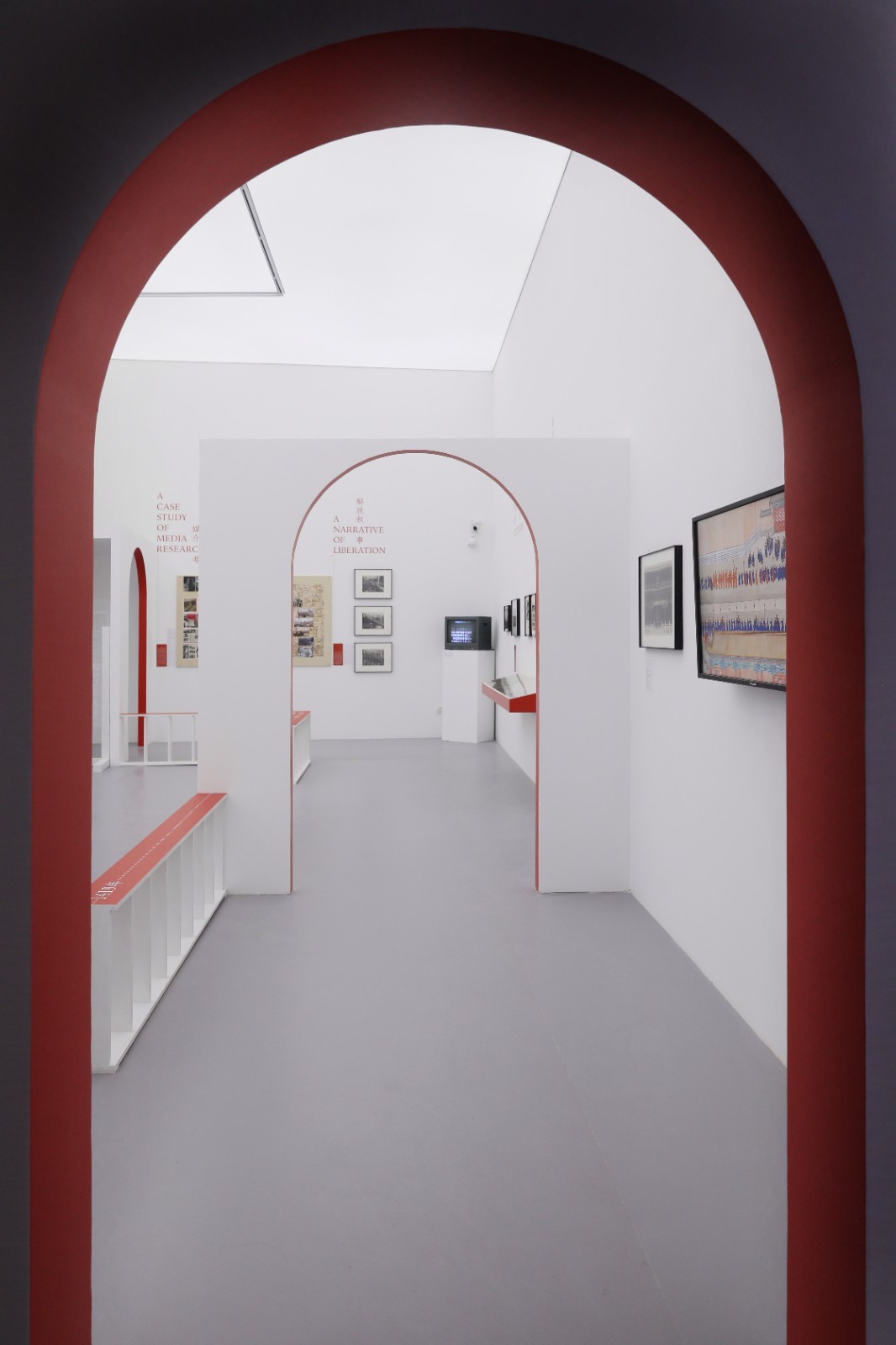
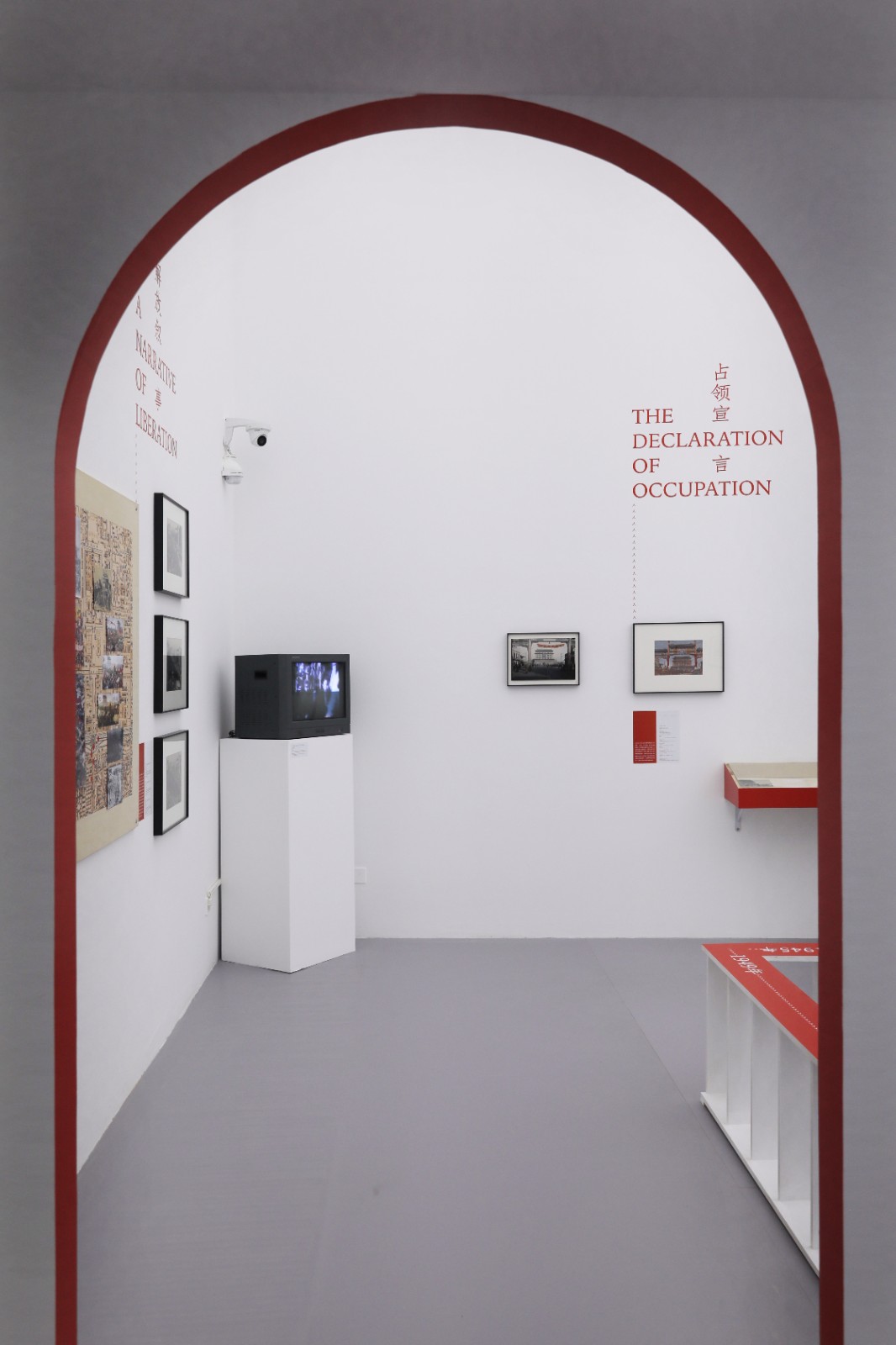
Exhibition View
Entering the city
Qianmen Gate was built during Emperor Yongle’s reign of the Ming Dynasty (1419) as the south gate of the inner city of Beijing in the Ming and Qing Dynasties. Once walking through it, you would have only a thousand steps to take before arriving at the Forbidden City, the key central office back then. From the heyday of the Ming and Qing Dynasties to the tempestuous years of the late Qing Dynasty and the Republic of China, from the passionate socialist revolution and construction period in the early years of new China to nowadays, Beijing’s urban area has been gradually expanded to include Qianmen Gate into its hinterland, which no longer serves as a city gate but remains as the “façade” of the city. With the assistance of photography, a media technology aimed at recording fact, and modern printing, the unique symbol has been reproduced and deformed to varying degrees.

Author Unknown, British Sikh Soldiers Entering Duanmen Gate, 1900, giclee (originally collodion photo), 18×25cm ©TAIKANG COLLECTION

Author Unknown, Qianmen Railway Station, 1900s, giclee (originally collodion photo), 18×25cm ©TAIKANG COLLECTION

Black-and-white Tabloid, Return of the Emperor and Empress Dowager, 1902, pictorial, 27.2×18.7cm collected by Zhang Yiliang

Ellen Catleen, Qianmen Gate in Peiping, 1934, 36×24cm,giclee (originally inner sheet of Peking Studies)
Especially in the parade held by the People’s Liberation Army on February 3, 1949 as they entered into Beiping (now Beijing), the advantages of photography over painting, broadcasting and writing in marking people and things that “once existed” were vividly displayed, and condensed into the special report Entering the City in the 48th issue of Northeast China Pictorial sponsored by the former Northeast Bureau of the CPC Central Committee. What’s more, in other types of old photos exhibited in this unit, people walked through the Qianmen Gate alone or in groups, and crossed the streets, the pailou, embrasured watchtower, barbican and gates one after another. They entered the central area of Beijing with different identities, backgrounds, purposes and even moods, modifying and updating the connotation of “entering the city” again and again, and then weaving a pattern of complex and organic meaning.

James Ricalton, Waldersee Led the Allied Soldiers through Daqingmen Gate to Wumen Gate, 1990s, albumen stereoscopic print, 9×18cm ©TAIKANG COLLECTION

Gao Liang, Ceremony Celebrating the Entry to Peiping: The Mechanized Artillery Unit of the People’s Liberation Army Marched to Qianmen Street, February 3, 1949, gelatin silver print, 23.5×29.5cm ©TAIKANG COLLECTION
Erasing
The “Protection of Peace Gate”, originally known as the “Ketteler Monument” at the west entrance of Xizongbu Hutong, was built by the Qing government under the pressure of the great powers to commemorate Ketteler, the German Ambassador who was killed during the Boxer Rebellion. In 1918, Germany was defeated in the World War I, and the inscription on the monument was erased by personnel from the allies, and the monument itself was demolished. Later, it was rebuilt in the Central Park (now Zhongshan Park), and the inscription was changed to “Victory of Justice”. In 1952, the Peace Conference of the Asian and Pacific Regions was held, and the inscription was changed to “Protection of Peace”.

Author Unknown, Ketteler Monument, 1900s, giclee (originally collodion photo), 80×115cm, collected by the Archives and Research Center of Taikang Space

Author Unknown, A Group Photo of Zaifeng, the Prince Chun, and German Military Officers and Political Officials after Ketteler Monument was Established, January 8, 1903, giclee (originally collodion photo), 18×25cm ©TAIKANG COLLECTION

Author Unknown, Inauguration Ceremony of Ketteler Monument, January 8, 1903, giclee (originally collodion photo), 17×25cm ©TAIKANG COLLECTION
From the “Ketteler Monument” to “Victory of Justice Gate,” and then to the final “Protection of Peace Gate,” it has been erased, demolished, displaced and rebuilt for many times in half a century. Its image has been preserved via photos of different ages and changed due to the continuous transmission of photographic images. As a result of this complex process, the pailou has undergone the strong qualitative change of its significance several times while its shape and structure remain almost unchanged. In addition, the official reports on Ketteler Monument, together with the text network consisting of relevant literary works and reminiscences, gradually blur its outline in history, gossip and literary fiction, making it the carrier of people’s national imagination when they were confronted with the invasion of the Republic of China by the powers.

Sidney Gamble, Ketteler Monument with Inscription Erased, 1918, giclee (originally black-and-white negative film), 15×20cm, collected by the Library of Duke University

Author Unknown, Victory of Justice Gate, 1920s, giclee (originally gelatin silver print), 70×115cm, collected by the Archives and Research Center of Taikang Space

Author Unknown, Victory of Justice Gate, 1930s, gelatin silver print, 5.7×8cm, collected by the Archives and Research Center of Taikang Space

Author Unknown, Protection of Peace Gate, 1950s, giclee (originally gelatin silver print), 80×115cm, collected by the Archives and Research Center of Taikang Space

Zhongshan Park Photo Studio, Protection of Peace Gate, 1980,gelatin silver print,6.8×6cm, collected by the Archives and Research Center of Taikang Space

Ye Qianyu, Liberate Peiping, 1959 (published by People’s Fine Arts Publishing House in 1964), picture poster, 54.6×38.9cm, collected by the Archives and Research Center of Taikang Space
Lingering
The Monument to the People’s Heroes, with its foundation laid on September 30, 1949, broke ground on August 1, 1952 and was unveiled on May 1, 1958. It was set up by the first plenary session of the National Committee of the Chinese People’s Political Consultative Conference to commemorate people’s heroes who sacrificed their lives in the modern history of China. It stands in the center of Tiananmen Square, proclaiming its indisputable core position in the history of new China.
Since its completion, Chinese and foreign people have paid visits in an endless stream to recollect the sad past, to look at it with reverence, to have a peaceful nap, to conduct passionate celebration, etc. However, its significance also changes with people’s lingering in different forms, continues to be superimposed by the redaction, remembrance and misappropriation of countless photos and their extensions, and finally becomes an archaeological stratum that needs to be clarified.

Author Unknown, Foreground of Tiananmen Square (before establishing the Monument to the People’s Heroes), 1950s, giclee (originally gelatin silver print), 15×25cm ©TAIKANG COLLECTION

Li Jianchen, The Monument to the People’s Heroes at Dawn, 1950s, presswork, 38.1×26.6cm
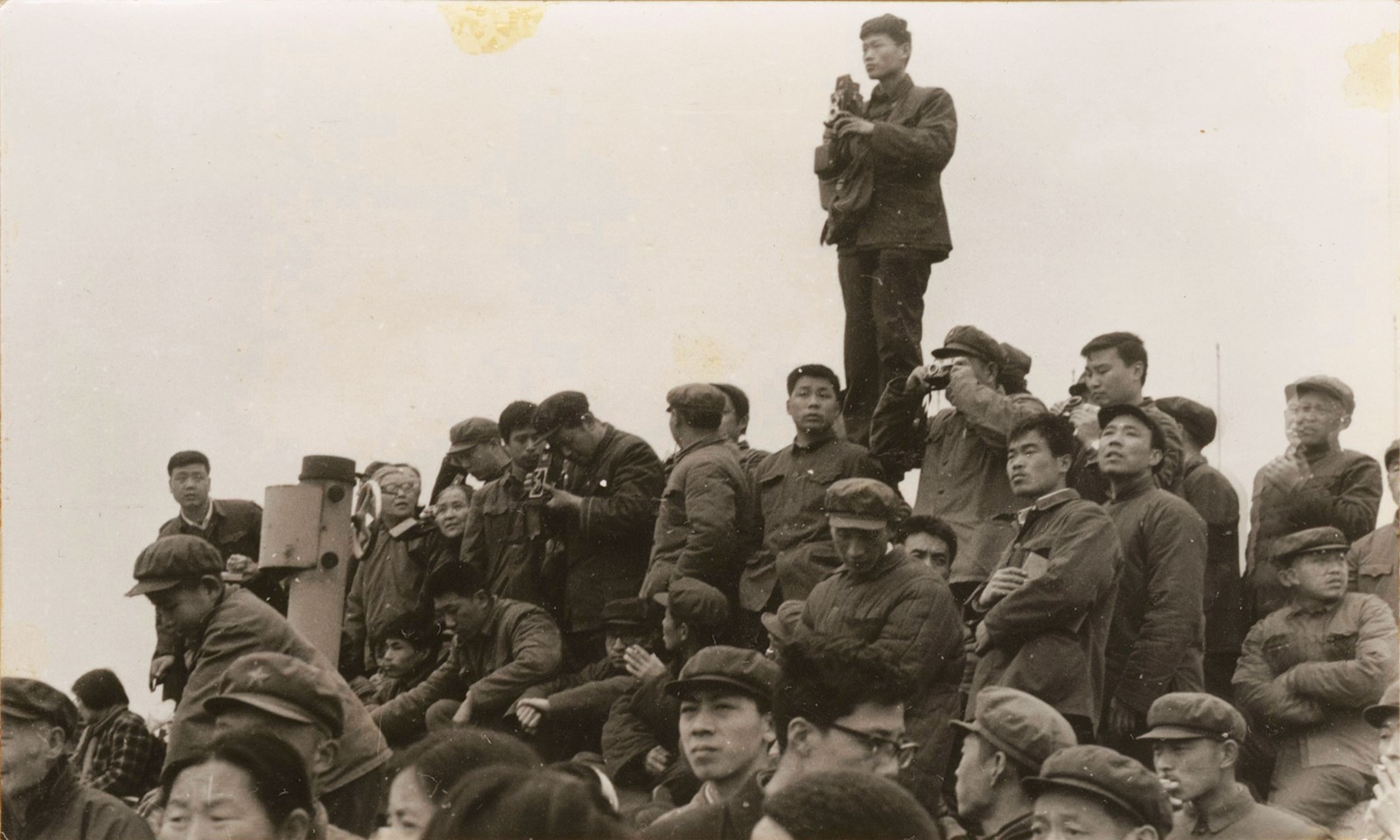
Bao Naiyong, April 3, 1976, 1976, giclee (originally gelatin silver print), 15×25cm ©TAIKANG COLLECTION
Following research projects and exhibitions such as “Wu Yinxian”, “1949: The Artistic Choices” and “Professional Amateur and Emerging Modernity: Luo Bonian and His Contemporaries 1930-1940s”, “City Gate, Pailou and Square” is an exploration and trial based on the Taikang Collection during the transformation of Taikang Space to an art museum. At the same time, the exhibition also invites practitioners and researchers in the fields of architecture, urban planning, journal history and early images to investigate and revisit historical narration, visual system, media technology and ancient relics, thus unveiling the double functions of historical images in terms of material and meaning, and transforming the sleeping past into the “contemporary history” worthy of reflection.
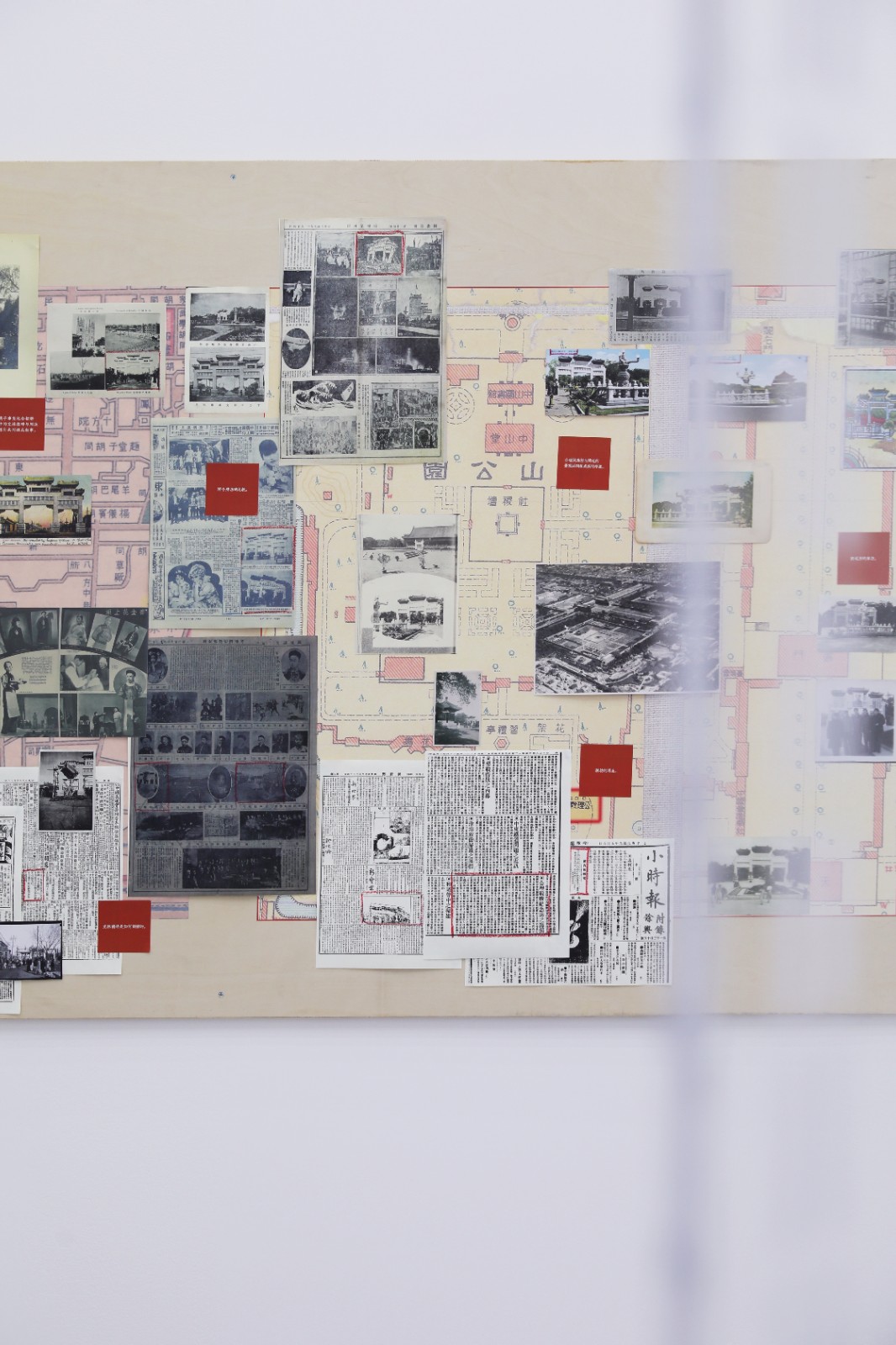
Exhibition View
It is reported that the exhibition remains on view till October 22.
Edited by CAFA ART INFO. Courtesy of Taikang Space.

City Gate, Pailou and Square: An Archaeology of Action on Photographs and Histories
September 1 - October 22, 2022
Artist: Bao Naiyong, James Ricalton, Heinz von Perckhammer, Ellen Catleen, Mumm von Schwarzenstein, Dmitri Kessel, Sidney Gamble, Xu Yang, Ye Qianyu
Curator: Hu Hao, Yang Yue
Artistic director: Tang Xin
Acknowledgement: Zhang Yiliang, Gao Yiding, Song Zhuangzhuang, Na Risong, Zhang Huatong, SuperNova


